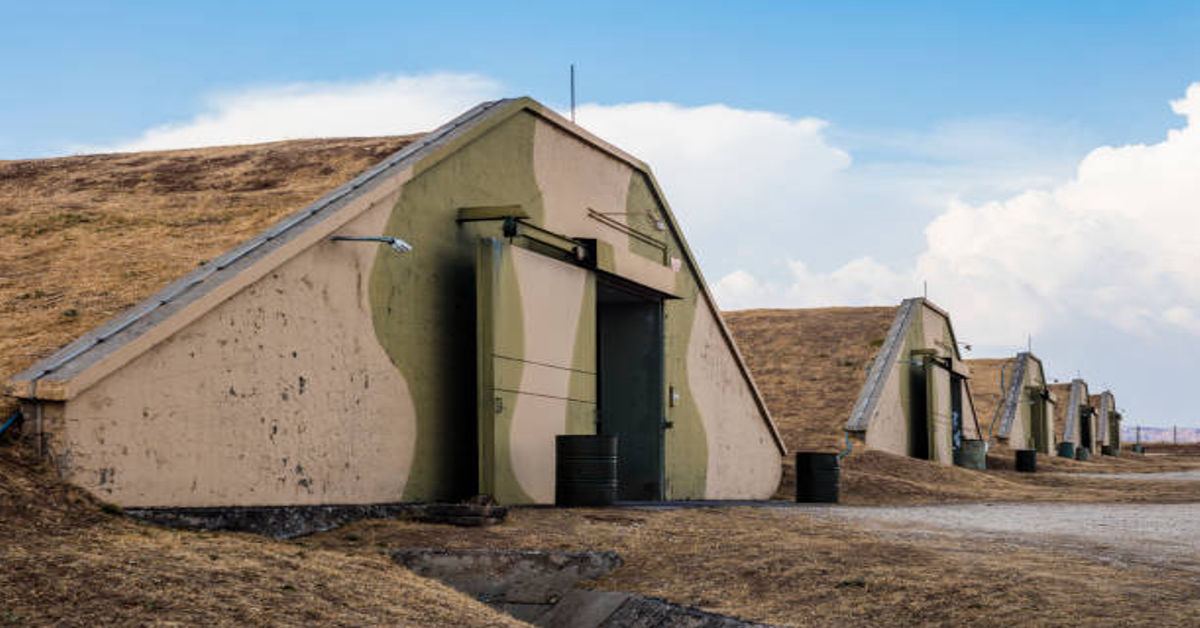Throughout human history, defense and protection have been at the center of architectural evolution. Among the most remarkable results of this evolution stands the bunker—a term that evokes imagery of war, safety, secrecy, and survival. A bunker is essentially a fortified structure, typically built underground or partially buried, designed to protect its occupants or contents from attack, explosions, or natural disasters. These structures combine the disciplines of engineering, architecture, geology, and military science to create safe zones capable of withstanding catastrophic external forces.
Bunkers became especially prominent during the World Wars of the 20th century, but the concept existed long before. Today, bunkers serve multiple purposes—ranging from military command centers and ammunition storage facilities to civilian shelters and data protection vaults. In the following sections, we will explore the origin, evolution, construction techniques, materials, and modern applications of bunkers, as well as the engineering challenges they present.
1. Historical Origins of the Bunker
The term bunker originated from the Scottish word “bonker,” meaning a chest or box used to store grain or valuables. Over time, the meaning evolved to describe secure enclosures used in military defense.
Early examples of bunker-like structures can be traced back to ancient fortifications where earthworks and thick stone walls were used to resist siege weapons. However, the modern concept of the bunker took shape during the 19th and 20th centuries, when advances in explosives and artillery demanded new forms of protection.
Table 1: Timeline of Bunker Development
| Period | Key Developments | Notable Example |
|---|---|---|
| Ancient Civilizations | Use of caves and stone shelters for defense | Mycenaean fortresses (Greece) |
| 18th–19th Century | Early underground magazines and fortifications | Fort Sumter, USA |
| World War I | Trench systems and reinforced dugouts | Maginot Line (France) |
| World War II | Massive underground command centers | Hitler’s Führerbunker (Germany) |
| Cold War | Nuclear fallout shelters and missile silos | NORAD (USA) |
| 21st Century | Civilian survival bunkers, data bunkers | Oppidum Bunker (Czech Republic) |
These stages demonstrate how bunkers evolved from rudimentary shelters into technological marvels capable of surviving nuclear blasts or biological threats.
2. Purpose and Function of a Bunker
Bunkers are not just about hiding underground—they are designed for endurance, communication, and operational continuity. Their functions generally fall into three categories:
- Military Defense: Protecting soldiers, command staff, and equipment from enemy attacks.
- Storage and Logistics: Safeguarding ammunition, fuel, or classified information.
- Civilian and Emergency Use: Providing refuge for civilians during wars or disasters.
Core Functional Requirements
- Blast Resistance: To withstand shockwaves from explosions.
- Sealing Mechanisms: To prevent gas or chemical infiltration.
- Ventilation Systems: To ensure breathable air under sealed conditions.
- Energy Independence: Often includes generators, solar systems, or fuel cells.
- Communication Systems: Internal and external radio or encrypted networks.
- Sustainability: Storage for food, water, and medical supplies for extended stays.
Each bunker is a self-contained world, designed to maintain human life when the outside environment becomes lethal.
3. Architectural Design and Construction
Designing a bunker demands a blend of civil engineering precision and tactical foresight. Every decision—from site selection to ventilation layout—is guided by purpose and threat level.
3.1 Site Selection and Geological Factors
The chosen site must meet several key criteria:
- Stable Ground Composition: Clay, rock, or compact soil for natural shielding.
- Elevation: Avoid flood-prone areas.
- Camouflage Potential: Should blend into the natural environment.
- Accessibility: Allow discreet entry and emergency evacuation.
Engineers often perform geotechnical surveys to measure soil density, water tables, and seismic risks before construction begins.
3.2 Structural Materials
The strength of a bunker relies heavily on the materials used. Common materials include:
| Material | Properties | Use Case |
|---|---|---|
| Reinforced Concrete | High compressive strength, durable | Outer walls and ceilings |
| Steel | Flexible, impact-resistant | Support frames and doors |
| Lead | Radiation shielding | Nuclear bunkers |
| Earth | Natural insulation | Embankment or cover layer |
| Composite Panels | Lightweight and modular | Modern civilian bunkers |
These materials are often layered—earth over concrete, concrete over steel—to absorb impact and disperse energy waves efficiently.
3.3 Design Principles
Bunker architecture typically follows these design rules:
- Low Profile: Minimal exposure above ground.
- Curved Walls: To deflect blast pressure rather than absorb it.
- Multiple Compartments: To localize damage if one section is breached.
- Redundant Systems: Power, air, and water lines duplicated for reliability.
In advanced designs, engineers employ finite element modeling (FEM) to simulate blast effects and structural responses, optimizing safety before construction even begins.
4. Types of Bunkers
Bunkers can be classified according to their function, location, and threat resistance.
4.1 Military Bunkers
Built for armed forces, these structures serve multiple operational needs:
- Command Bunkers: Headquarters for military leaders; equipped with communication centers.
- Observation Bunkers: Small, elevated or partially buried; used for surveillance.
- Ammunition Storage Bunkers: Designed with thick walls and blast doors to contain explosions.
- Missile Silos: Deep vertical bunkers for storing and launching ballistic missiles.
4.2 Civil Defense Bunkers
These protect civilians from wartime or disaster threats:
- Public Shelters: Found in urban areas, accommodating large groups.
- Private Survival Bunkers: Built by individuals or families for emergencies.
- Fallout Shelters: Specifically designed for radiation protection post-nuclear event.
4.3 Specialized Bunkers
Some bunkers serve unconventional roles:
- Data Bunkers: Secure digital archives resistant to EMP (electromagnetic pulse) attacks.
- Energy Bunkers: Store fuel or renewable energy reserves safely.
- Government Continuity Bunkers: Locations where national leadership can operate during crises.
Table 2: Bunker Types and Key Features
| Type | Primary Purpose | Key Characteristics |
|---|---|---|
| Military Command | Coordination during warfare | Deep underground, communication lines |
| Civilian Fallout | Nuclear protection | Air filtration, food storage |
| Ammunition Storage | Safe weapons storage | Blast-resistant walls, isolated location |
| Data Bunker | Digital asset protection | Temperature control, EMP shielding |
| Luxury Survival | Private refuge | Living quarters, renewable energy systems |
5. Engineering of Safety and Survival Systems
A bunker’s strength isn’t only about thick concrete—it’s also about sustainable living systems.
5.1 Air Filtration and Ventilation
Proper air circulation is crucial. Bunkers use HEPA filters, carbon scrubbers, and overpressure valves to keep contaminants out while allowing oxygen in. Some are equipped with NBC (Nuclear, Biological, Chemical) filtration systems capable of neutralizing airborne toxins.
5.2 Power Generation
Electricity is often generated by:
- Diesel generators (primary source)
- Solar panels with battery storage
- Wind turbines (in exposed locations)
- Hand-crank or pedal-powered systems (for emergencies)
5.3 Water and Waste Management
Water is collected from underground wells or stored in sealed tanks. Modern bunkers include filtration and recycling systems, using reverse osmosis and UV sterilization. Waste is managed through composting or chemical toilets, minimizing environmental impact.
5.4 Communication Networks
Even deep underground, bunkers maintain secure communication lines using fiber optics or satellite relays. Military bunkers use encrypted radio systems to prevent interception.
5.5 Food and Resource Storage
Bunkers are stocked for long-term autonomy. Freeze-dried foods, canned goods, and hydroponic setups ensure nutrition. Some advanced shelters include micro-farms and oxygen-generating algae systems.
6. The Role of Bunkers in World Wars
6.1 World War I
WWI marked the birth of trench warfare. Soldiers built underground shelters to survive artillery bombardments. These were primitive bunkers—wooden supports with sandbag walls—but they introduced the idea of underground protection in warfare.
6.2 World War II
WWII elevated bunker design to new heights. Countries built vast networks of underground bases:
- Germany: Constructed the Atlantic Wall—fortified bunkers along the coast.
- Britain: Developed command bunkers like the Cabinet War Rooms in London.
- Japan: Built mountain bunkers for factories and weapons.
- United States: Created NORAD-like precursors for nuclear readiness.
These bunkers were not just shelters—they were strategic nerve centers, directing battles, protecting leadership, and housing essential war materials.
7. Cold War Era: The Age of Nuclear Bunkers
After 1945, the world entered a new era of fear: nuclear warfare. The atomic bomb redefined what a bunker needed to withstand.
Nuclear bunkers required:
- Deep burial (50–100 feet) beneath solid rock.
- Radiation shielding using lead and concrete.
- Air filtration against radioactive dust.
- Stockpiles for years of survival.
Countries like the U.S., USSR, and Switzerland invested heavily in bunker systems:
- Cheyenne Mountain Complex (USA): Built to survive a direct nuclear hit.
- Moscow Metro-2: A secret underground network for government evacuation.
- Swiss Civil Defense System: Mandated shelters for every citizen.
This period also gave rise to civil defense campaigns, teaching families how to build or access fallout shelters. The architecture of fear became part of everyday life.
8. Modern Bunkers: From Military to Civilian Use
Today’s bunkers are not only tools of war but symbols of resilience and preparedness. With rising global instability, pandemics, and natural disasters, private bunkers are making a resurgence.
8.1 Luxury Survival Bunkers
High-net-worth individuals now invest in luxury underground estates featuring:
- Bedrooms, kitchens, and gyms
- Renewable energy systems
- Medical bays
- Entertainment zones
These are engineered for comfort while maintaining military-grade safety.
8.2 Data Bunkers
As the digital age progresses, information is the new treasure. Data bunkers secure cloud servers underground, protecting against cyberattacks, EMPs, and power outages.
8.3 Research and Preservation Bunkers
Scientific organizations store genetic material and biological samples in deep vaults—such as the Svalbard Global Seed Vault—to preserve biodiversity.
Table 3: Modern Uses of Bunkers
| Category | Example Use | Description |
|---|---|---|
| Luxury | Vivos Europa One | Private luxury bunker complex |
| Data Security | Pionen Data Center (Sweden) | Underground cloud facility |
| Scientific | Svalbard Seed Vault | Global agricultural gene bank |
| Energy | Oil/Fuel Storage Bunkers | Underground reservoirs for safety |
9. Architectural Challenges and Innovations
Building a bunker today poses new architectural and ethical questions.
9.1 Challenges
- Cost: High-quality materials and excavation drive expenses.
- Psychological Impact: Long-term underground living affects mental health.
- Environmental Integration: Must minimize ecological disruption.
- Maintenance: Requires constant upkeep of filtration, energy, and security systems.
9.2 Innovations
Modern engineers address these through:
- Smart Monitoring Systems: IoT sensors track air quality and pressure.
- Green Energy Integration: Solar and geothermal systems reduce dependence on fuel.
- Biophilic Design: Incorporating greenery and natural light via light tubes to enhance livability.
- Modular Construction: Prefabricated units allow faster, cost-effective deployment.
10. Bunkers in Popular Culture and Future Prospects
Bunkers have also captured the imagination of filmmakers, authors, and game designers. They symbolize safety, paranoia, and human survival instincts. Movies like “10 Cloverfield Lane” and “Threads” showcase both the hope and horror associated with bunker life.
Looking ahead, bunkers may evolve into sustainable underground cities—equipped with renewable power, advanced recycling, and AI-managed life systems. As global populations rise and climate threats intensify, subterranean architecture might shift from a last resort to a mainstream urban solution.
Conclusion
The bunker stands as one of humanity’s most enduring architectural achievements—a structure born from fear but perfected through science. From humble trenches to high-tech survival fortresses, bunkers reveal our instinct to adapt and protect. They embody both the fragility and resilience of civilization.
As technology advances, the line between military necessity and civilian adaptation continues to blur. Whether for defense, data, or disaster preparedness, bunkers will remain a cornerstone of human security architecture—an ever-relevant reminder that safety is not built above ground, but often beneath it.
FAQs
1. What is the main purpose of a military bunker?
A military bunker is designed to protect personnel, equipment, and command operations from attacks, explosions, and chemical or nuclear threats. It serves as a secure base that allows operations to continue even during extreme conditions.
2. How thick are bunker walls typically built?
The thickness varies depending on purpose. Small bunkers may use 1–2 meters of reinforced concrete, while nuclear bunkers can exceed 3–5 meters, often layered with earth and lead for radiation resistance.
3. What is the difference between a bunker and a fallout shelter?
A bunker is a general term for a fortified structure, while a fallout shelter is specifically designed to protect occupants from nuclear radiation after a detonation.
4. Can civilians build their own bunkers legally?
Yes, in many countries, private individuals can build bunkers, provided they comply with local building codes, land use regulations, and environmental requirements.
5. Are modern bunkers only for war?
No, modern bunkers serve many peaceful purposes—such as data storage, disaster preparedness, energy storage, and scientific preservation—beyond their traditional military role.











